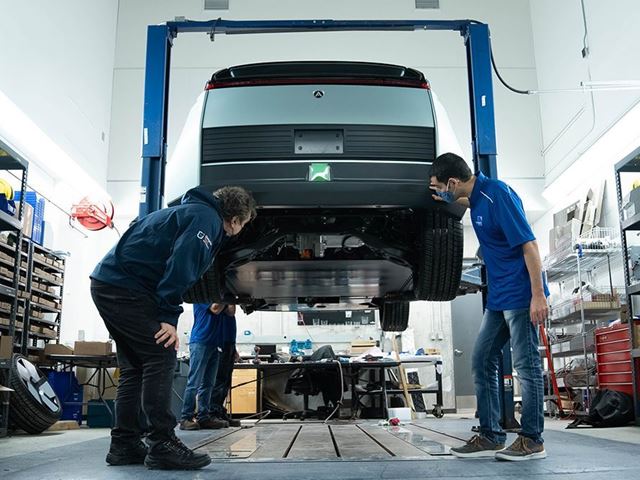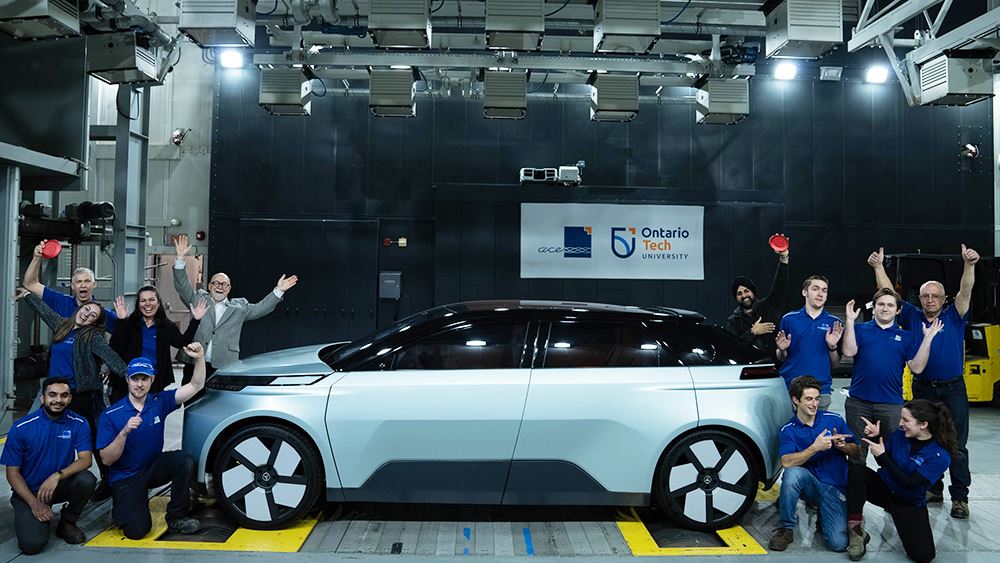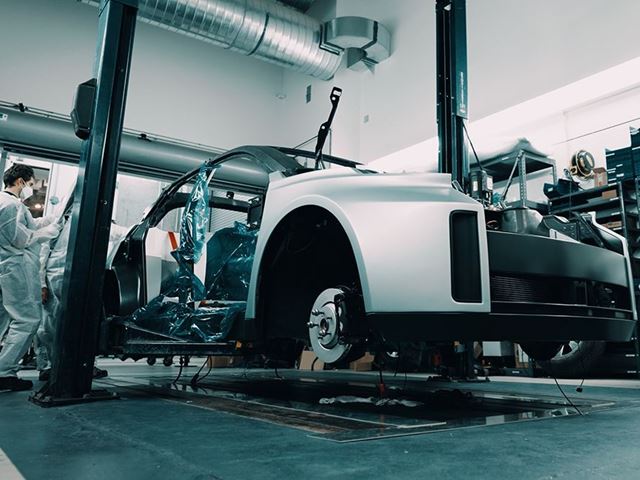
- Latest: Welcome to Auto Futures - Mobility News, Features, Exclusives and More...
- Latest: Mercedes-Benz Unveils the SUSTAINEER - an Electric Last-Mile Delivery Solution
- Latest: XPENG & Volkswagen to Jointly Develop Electrical/Electronic Architecture in China
- Latest: Honda Unveils Ye - its Next-Generation EV Series for China
- Latest: JLR Launches Portable Battery Energy Storage System Using 2nd-Life PHEV Batteries
- Latest: The US Startup Rolling out Urban Curbside EV Charging - Voltpost's CEO
Project Arrow - Ontario Tech University's Mission to Build the First All-Canadian Electric Concept Vehicle
Staff Writer
- Jan 26 2023

A four-month deadline to build an electric concept car, and a two and a half month wait to receive carbon fibre body panels to build it. How did Canadian university Ontario Tech respond? Leveraging the skills of the students, engineers, and skilled trades team, along with some 3D printing, of course.
Breanna Sherman has our report.
In 2003, Ontario Tech University opened its doors to students, making it one of the youngest universities in Canada. Located in Oshawa, about 65 km east of Toronto, it is the only university in the country to offer an accredited Automotive Engineering program, and in Fall 2023, will offer a program in Energy Engineering.
The school prides itself on its innovation, and this was one of the many reasons the Automotive Parts Manufacturers’ Association (APMA) chose the university as its lead academic institution in Project Arrow, whose mission was to build the first ever all-Canadian electric vehicle concept car.
“At Ontario Tech, we’re known to be very willing to jump into projects where it’s an uncertain outcome, but we want to take the chance to show how effective we are,” Dr. Steven Murphy, President and Vice Chancellor of Ontario Tech, tells Auto Futures.

Engineering And Energy Expertise
A total of 20 people were involved in the build, and this included undergraduate students, graduate students, and engineers, as well as, “an academic researcher… whose research figured prominently into many of the actual decisions we made around materials and such,” explains Murphy.
There were also machinists, tool and die makers, mechanics, and electricians who all worked in collaboration with the group.
“Without them, this really would not have been brought to life. It would’ve been an amazing computer file, but to bring it to physical life, it required their help,” says Izzy Cossarin, a fourth-year student in mechatronics engineering.
Students like Cossarin were able to put into practice the material that they learned in class.
“In university, we learn all the principles of engineering and how to apply them, but you never really learn how all of this work is required to facilitate that engineering. So, dealing with suppliers and sourcing materials, project management, that kind of stuff has been more of what I’ve been learning on this project,” explains Cossarin.
Other Canadian universities played a role in Project Arrow as well; Carleton University contributed to Project Arrow in design, and the University of Waterloo was involved in some of the car’s systems, but Ontario Tech was responsible for the actual build of the car.
“Ontario Tech shines because we’re an energy expert. If we were asked to do this exact same thing for a hydrogen vehicle, we could do so,” adds Murphy.
The ACE Facility And a Wind Tunnel
In addition to its 'getting things done' reputation, Ontario Tech’s Automotive Centre of Excellence (ACE) facility has one of the world’s best Climatic Aerodynamic Wind Tunnels, which allowed for rigorous testing of the vehicle. Companies and research experts come from all over the world to conduct their testing on the Ontario Tech campus.
“Of course, for an electric vehicle, everything is about how much distance you can get out of the battery. So, we were able to test so much of that in the wind tunnel to see how much drag was actually on the car and to ensure that we were creating a sleek, new design and building it accordingly,” says Murphy.
Ontario Tech’s ACE facility also has the fastest charger in Canada that can effectively top up an EV in minutes. Normally, this process can take up to 10 hours.

Canada as a Worthy Investment
“Obviously, as an academic institution, we’re not going to be setting up an assembly line anytime soon to build cars,” says Murphy.
The success of Project Arrow is proof that Canada has the talent and the ability to build electric vehicles, but this doesn’t necessarily mean this is the end-all solution.
“I think a lot of people could read this as, ‘We should all builds EVs and they’re the champion of the future.’ How I view it is - EVs are one part of a much larger global conversation on energy and this car helped to prove that that conversation can happen in Canada,” explains Murphy. “The truth is, EVs work in certain circumstances, with the right grid, and with the right climate to support them. If you don’t, you need other alternatives. And if we’re really serious about getting to net-zero, we need all hands on deck.”
The Future of Project Arrow
After months of working in the ACE facility, the concept car was complete.
“When we finally put on the door skins - because that was the very last thing needed to assemble the vehicle and to really complete the look of it – that was a really surreal moment,” says Andrew Genovese, a fourth-year student in automotive engineering.
The main goals of Project Arrow were to get the government onside, to design and build it, and to educate.
Now, the vehicle will continue to make an appearance at car shows in North America and around the world, “to show people what is possible because really, the point is that any country that wants to put their resources towards the future can be equally ready to play into the energy space,” concludes Murphy.
“I was sort of hesitant at first but being on this project it’s gotten me super excited for the future now because I’ve seen the potential that we have and it… helps me realize that the automotive industry is certainly for me,” says Genovese. “I would definitely like to work on electric vehicles further in the future.”
Popular Categories
